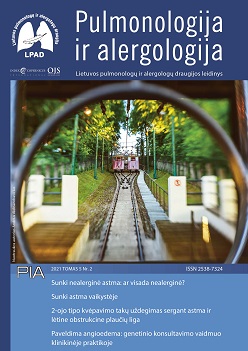SEVERE ASTHMA IN CHILDHOOD
Abstract
Asthma is the most common lung disease in children. For most children with asthma, there is a good response to standard treatment. However, from 3.8 to 20% of these children have a severe form of asthma. Severe asthma has been classified into ‘difficult to treat asthma’, which is defined as poor control due to poor adherence, wrong medication use technique, due to allergens at home or school, the child’s overweight, psychological factors, and into ‘treatment-resistant asthma’ which is defined as difficult asthma despite management of factors mentioned above. After careful assessment of the diagnosis in children, 12–30% the true cause of severe asthma is determined by another disease that caused similar symptoms. After additional assessment of medication use and the impact of environmental factors, a total of about 30–50% severe asthma in children becomes ‘difficult to treat asthma‘. For treatment of severe childhood asthma could be important to determine the endotype of asthma. There are three endotypes of asthma: eosinophilic inflammation, neutrophilic inflammation, and paucigranulocytic inflammation. Eosinophilic inflammation is most common in children. The confirmation of eosinophilic inflammation may be done by performing nitric oxide fraction in exhaled air test and by confirming allergies. Detecting eosinophils in the sputum is rarely informative for children. For severe asthma in childhood, the combined treatment is recommended high doses of inhaled glucocorticoids together with long-acting beta-agonist, leukotriene receptor antagonist or tiotropium. For older children, it is recommended to use biological therapy and avoid long-term systemic glucocorticoids use.


